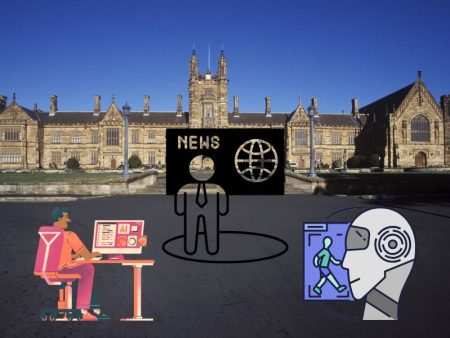So, funny thing happened the other day—
I was walking my dog while listening to a blog post about productivity. And halfway through, I realized… I wasn’t just listening to anyone. This wasn’t a human speaker at all. Nope. It was a synthetic voice. And yet, it sounded weirdly human—like the kind of voice you might hear narrating a Netflix documentary. Clear. Calm. Engaging. Not a robot voice. Not Siri. Something… else.
That’s when it hit me:
Text-to-speech AI isn’t just a convenience tool anymore—it’s slowly, and kind of beautifully, revolutionizing the way we consume content.
The Rise of Listenable Everything
You remember when “reading” meant sitting down with a book, flipping pages (or scrolling on Kindle if you’re the tech-forward type), and giving it your undivided attention? Not anymore. These days, content is everywhere. And more importantly—it’s in your ears.
Text-to-speech (TTS) tech, once clunky and mechanical, now reads everything from longform articles to Twitter threads like it just stepped out of a public radio studio. It’s the new audiobook—but for everything.
The implications? Kinda huge.
Let’s unpack it.
Accessibility First, but Not Only
First off, the obvious. TTS technology has been an absolute game-changer for people with visual impairments or reading disorders. That’s not news. What is new, though, is how Text To Speech AI has gone from basic utility to high-fidelity experience.
We’re talking rich emotional inflections, multilingual capabilities, regional accents—even personality quirks. Some voices laugh at jokes. Others pause for dramatic effect. It’s not just about relaying info anymore—it’s about delivering it in a way that feels human. If you’ve ever had chills listening to a well-told story, you know what I mean.
But here’s the twist: it’s not just accessibility anymore. It’s preference.
The Commuter’s Superpower
Morning routine. You’re brushing your teeth, packing a bag, scrambling eggs—whatever you’re doing, chances are your hands and eyes are busy. That’s where TTS sneaks in like a life hack you didn’t know you needed.
Instead of skimming a 2,000-word article at your desk, you’re hearing it read to you while you drive or jog. It turns dead time into rich, informative moments. Like podcasting, but more flexible. Way more.
Need to get through a 20-page research paper for work? Boom—turn it into audio. Want to catch up on your favorite blog while grocery shopping? Done. That’s what tools like AI Voice Text To Speech Unlimited Characters are enabling. No arbitrary limits. No cut-offs. Just plug in your content and go.
And here’s something weirdly personal:
I found myself emotionally connecting with a synthetic voice the other day. Like, actually feeling something. Wild, right?
The Emotional Side of Synthetic Voices
Okay, I know how that sounds. “Emotional connection with a machine voice?” Really?
But let’s talk about this for a sec.
Imagine listening to a heartfelt blog post about grief, narrated by a calm, warm voice that knows exactly when to pause, when to soften. It’s subtle, but those vocal cues matter. They make you feel the words in your bones. And if you’re using an advanced AI Voice Generator Unlimited Words, the flow is seamless—no awkward cuts, no tonal shifts.
There’s empathy in delivery. And when machines start capturing that nuance? We’re in new territory. Scary? Maybe. But also kind of beautiful.
Why Writers and Creators Are Jumping In
Let’s pivot a bit.
Writers. Bloggers. Newsletter authors. Even YouTubers.
They’re all catching on to something: if your audience can hear your work, you can reach them in more places. And faster. Reading takes time and intention. Listening? That’s hands-free intimacy.
In fact, a lot of creators are now offering both text and audio versions of their content. Not because they have to—but because they want to keep their audience close in all the small in-between moments of life.
It’s kind of like… having your favorite writer sit next to you on the subway and whisper their latest post in your ear. Except, you know, without the weirdness.
But… Is It Too Good?
Let’s take a beat.
It’s all sounding amazing, right? But isn’t there a part of you (and me) that wonders: where does the line blur? When AI voices get too good, too lifelike—what happens to the real ones?
It’s a valid question. And the answer, honestly, is complicated.
No, I don’t think AI voices are replacing real people anytime soon. Because at the heart of it, we still crave authenticity. The quirky stammer in a podcast. The off-script giggle in a livestream. Those human imperfections? They matter.
But that doesn’t mean synthetic narration isn’t valuable. It just means we need to treat it like a tool—not a replacement. Kind of like how photography didn’t replace painting. It just created a new medium. Same idea here.
Education, Podcasts, and the Netflix of Content
Now here’s where things get super interesting.
Imagine a student with ADHD trying to stay focused through a dense history chapter. Reading? A struggle. But listening to a dynamic AI voice narrate it with pace and expression? Total game-changer.
Or take micro-podcasting—short-form, personalized content bites made using TTS. Think 2-minute explainers, summaries of daily news, even bedtime stories for kids… all generated instantly.
With the right voice tools, anyone can become a storyteller. And that’s what we’re moving toward: a world where content creation isn’t just democratized—it’s audiomized. (Okay, I made that word up. But you get it.)
The Beauty of Choice
At the end of the day, it comes down to this: choice. You can still read your favorite blog on your phone if that’s your jam. Or you can listen to it while folding laundry. You’re in control.
And that’s the real win here.
Technology doesn’t replace us—it empowers us. Makes our content more flexible. More accessible. More… us.
Even as I type this, I’m thinking: someone might be listening to these words right now instead of reading them. Maybe you’re on a walk. Maybe you’re lying on the couch, eyes closed. And that? That’s powerful.
So… Where Do We Go From Here?
If you haven’t tried it yet—seriously, give it a shot. Take a long article. Feed it into a Text To Speech AI tool. Plug in your earbuds and hit play. Then tell me it didn’t change how you feel about reading.
You might just find that hearing the words instead of seeing them brings a whole new level of connection. Maybe even joy.
We’re not just “reading” anymore. We’re experiencing content.
So whether you’re a writer, a reader, a busy parent, a college student, or just someone who likes listening to smart things while cooking spaghetti—TTS AI has something for you.
And hey, who says a robot voice can’t make you cry?
TL;DR (But You Should Listen Instead)
- Text-to-speech AI has moved from clunky to conversational.
- It’s revolutionizing content consumption by making everything listenable.
- Accessibility, multitasking, emotional connection—it’s all part of the appeal.
- Tools like AI Voice Text To Speech Unlimited Characters and AI Voice Generator Unlimited Words are unlocking creative possibilities.
- You don’t have to choose between reading and listening anymore. You can have both.
So next time you’ve got an article saved for later? Don’t wait. Hit play. Let the words come alive.
And maybe—just maybe—you’ll hear something unexpected.
Author’s Note:
Yeah, I talk to my dog. I also let a machine read me bedtime stories sometimes. Judge away. But try it first.
Catch you in your earbuds.
—
End of Post
Let me know if you’d like a condensed version for social sharing or a visual version for mobile UX.


